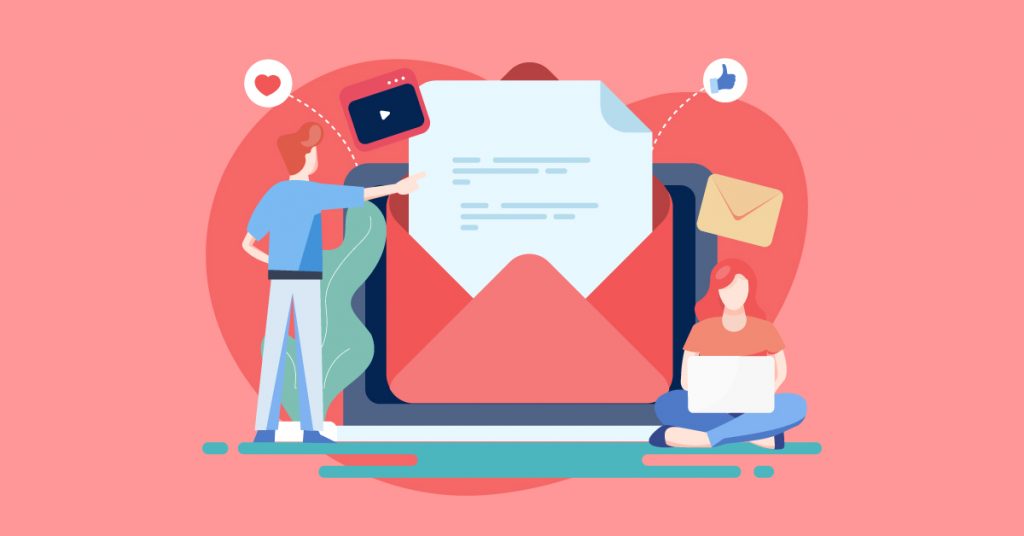Copywriting is the unsung hero of an email marketing campaign. Effective email copy can increase open rates, amplify conversions and build a loyal brand following.
But what is good email copy?
To start, email marketing copy should be engaging, provide value and lead to conversions. In this article, we will discuss how to write a marketing email that does all of those things.
Lure Readers in With a Captivating Subject Line
Like it or not, every email conversion starts with the subject line. After all, the subject line is the first thing a person sees when receiving an email. You could have the most incredible email design in the world with perfectly optimized CTAs, but if no one opens the email, that doesn’t mean diddly squat.
Email subject lines should grab a subscriber’s attention and leave them dying to know more. Here are some tips for writing a catchy subject line:
- Keep it brief. Most email clients will cut off a subject line if it’s too long, especially on mobile devices. So try to keep your subject lines less than 60 characters.
- Avoid spammy words. Overly promotional terms can trigger spam filters — experiment using A/B testing to find out what words your team should avoid.
- Ask a question. Asking a question is a great way to spark curiosity to lure in a potential buyer. For example, a subject line like “Are you washing your sheets enough?” will drive people to open because they want to know how often they should be throwing those dirty sheets in the laundry.
- Create urgency. Sometimes, it makes sense to mention a deadline in the subject line. For example, saying something like “Sale ends tonight!” will help ensure the email isn’t left sitting in someone’s inbox for weeks.
- Focus on action. Some people liked to be told what to do. Try giving a clear action in your subject line. For example, “Sign-up for our upcoming webinar.”
- Add personalization. Incorporating personalization, like a recipient’s name, is a surefire way to grab an email subscriber’s attention.
Keep it Going With Your Preheader
If the subject line is the bait, then the preheader is the hook, line and sinker to reel a customer in. If you’re unfamiliar, preheader text is what appears under the subject line in someone’s inbox.
Your preheader text should build on the curiosity that you created with your subject line. Keep the momentum going by telling your audience why they should open the email. Will they receive a valuable coupon? Early access to the latest sale? A sneak peek at an upcoming release?
Every inch of a subscriber’s inbox is valuable real estate. Don’t waste it.
Get to the Point
Now that we’ve covered the copy outside of the email let’s start with what’s inside the email.
The first sentence of your email copy is the most important. If you start with a bland opening, readers will move on to something shinier. The best way to start strong is to get to the point.
Journalists call the opening paragraph of a story the lead (or lede). This is where they include all of the most relevant content — since most readers won’t go past the first paragraph anyway.

Think about the central message of the email and include it at the top. Your readers should be able to open an email and immediately understand what they’re reading.
Don’t Go Overboard on the Sales Talk
Just because you’re writing a sales email doesn’t mean it has to sound like a sales email. Don’t be pushy or overly promotional. Instead, focus on the benefits of a product and not just the features.
For example, don’t talk about how the raincoat has sealed seams, talk about how those sealed seams keep you dry even during a torrential downpour.
Personalize, Personalize, Personalize!
We’re talked before about how batch and blast emails are bad for business. That’s because not every email subscriber is the same. Instead of sending the same email content to every single person, segment your email lists and personalize the message.
You can personalize an email at an individual level by adding in their name or other personal information. Or you can personalize a message on a larger scale by sending three or four different versions of an email based on user demographics or buying habits.
One simple example is to focus on men’s clothing for male subscribers and vice versa.
You can also personalize your emails based on where someone is in the sales cycle. For example, you will want to talk to new subscribers differently than loyal customers.
Pay Attention to Your CTAs
A call to action (or CTA) is the part of your email or landing page that urges a reader to do something. For online stores, this is often a button that says something like “Shop Now.”
CTAs are one of the most important factors to increasing click-through rates and conversion rates. Since they’re so important, we highly recommend that you test out different variations of your CTA button.
Besides the text on the better, you can also test out different colors, locations, sizes, etc. Marketers call this conversion rate optimization, and it’s essential for all digital marketing efforts.
Write in the Second Person
Writing in the second person is when you use words like “you.” For example, “You’re not going to want to miss this!”
Writing in the second person helps copywriters avoid talking about themselves. After all, we want to focus on the consumer, not the business. You want to focus on the value that the consumer receives, which is easier when you don’t use words like “we” or “I.”

Know Your Target Audience
You want to talk to your subscribers like a friend, not like a stranger. But, to do that, you need to know and understand your target audience.
What do they want in an email? Why did they sign up? Why do they like your products?
You can get the answers to those questions through traditional research methods like surveys, or you can use “big data” and make assumptions based on purchasing habits, what emails performed well in the past, user demographics, social media profiles, etc.
You can also use list segmentation to speak to audiences differently. For example, you might have a list of VIP customers that want to be talked to like VIP customers. This marketing tip goes hand-in-hand with our “personalization” type from above.
At the end of the day, writing emails to your subscribers should feel more like a conversation than a sales pitch — getting to know your audience makes that much easier.
Test, Test, Test
We mentioned A/B testing a couple of times already in this article, but we’ll say it again because it’s that important.
The best email copy for your small business will be different than the best email copy for someone else’s ecommerce business. The only way to know for sure is to TEST.
Your email service provider should allow for simple multi-variant tests — if it doesn’t, then you might want to consider switching to something more robust.
There are a lot of facets that go into sending a great email. First, there are complex considerations like automation, segmentation and deliverability. And then, there are more artistic considerations like design and copywriting.
Don’t keep buried in the technical aspects of email marketing when sometimes compelling copy is all you need to improve your email messages.
